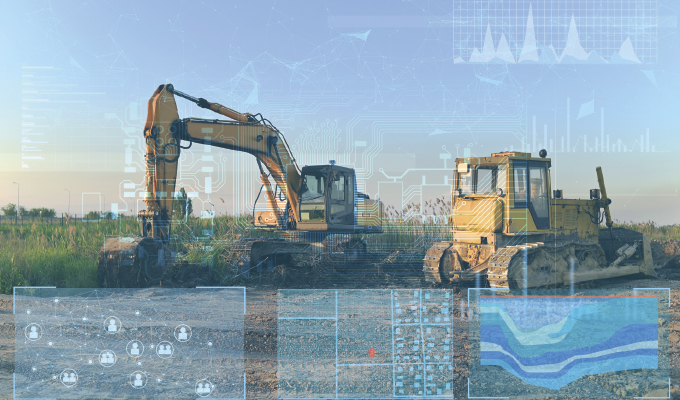Artificial intelligence (AI) is becoming part of our daily lives, at work and at home. As the use of AI increases, so will various claims arise involving its use. This article considers unforeseen and problematic claims arising from the use of AI in the construction industry.
AI is being used in all phases of construction. Pre-construction, AI is used to create plans and specifications. For example, through the use of Building Information Modeling, engineers can create a digital structure, and contractors can track parts, shipments, and installation changes in real time.
During the project, AI is used to analyze project data to predict potential issues before they cause delays and cost increases. AI can allocate labor and materials, schedule tasks, predict cost overruns, and identify schedule risks. AI-powered cameras and sensors can monitor quality, identify defects, detect leaks, and alert workers to issues to be addressed. On-site cameras, drones, and robots use facial recognition to assess worker productivity and conformance to procedures, as well as provide security/safety measures. Construction workers are killed on the job five times more often than other laborers. AI can monitor construction sites for safety hazards and alert workers to potential dangers in real time. If team members aren’t wearing protective gear properly, AI can prompt safety training. Safety sensors on vehicles may be able to automatically stop a vehicle. Post-incident, AI could aide in preserving critical evidence for use in defending against a legal claim.
Of course, companies are starting to use AI to perform the work itself. Self-driving machinery can perform repetitive tasks—such as pouring concrete, bricklaying, welding, and demolition—more efficiently. Excavation and prep work are being performed by autonomous or semi-autonomous machinery, which can prepare a job site with the help of a human programmer. Machine learning can power robots to build entire structures with 3D printing.
DRAWBACKS
While AI can make work more efficient and more economical, there are drawbacks. As seen recently in the worldwide shutdown of computer applications due to the CloudStrike software outage, operational shutdowns resulting from AI-system malfunctions could negatively impact all industries. Whether a global outage or a site-specific failure, non-functioning AI systems could trigger business interruption claims by, and against, contractors who rely on AI technology. Construction projects may face delays, increased material costs, and loss of skilled labor where AI manages project logistics. Building owners may seek legal damages for business interruption or breach of contract, when delays in project completion expose their businesses to risk.
Contractors without cyber risk or similar coverage may find themselves making payouts to building owners as business-interruption damages under an insurance policy are generally only recoverable to compensate for lost earnings, not to compensate for other potential consequential losses.
While there is not yet a great deal of litigation over AI-related claims, in other scenarios, loss of time has been held to be not recoverable. Conversely, the Fifth Circuit, in litigation over Southwest Airlines’ business interruption claim brought about by the 2016 computer system failure that led to disrupted flight schedules, ruled this year that Southwest’s refunds, discounts, and other payments made to its customers were not excluded by the company’s “System Failure” coverage in its cyber risk business interruption insurance policy. Southwest’s policy excluded discretionary damages, but the Fifth Circuit ruled that because the payments were links in a causal chain that led back to the system failure, they were not discretionary.
RISK OF MALFUNCTION
Manufacturers of AI-enhanced products could also be subject to property damage or bodily injury claims resulting from malfunctions. One notable example is using automated driving to operate heavy machinery. Documented failures of automated driving have existed for several years. In 2019, a group of drivers filed a lawsuit against Honda motors in California alleging that Honda Sensing technology, which uses sensors to assist drivers when there is a possibility of collision, malfunctioned by applying brakes where no threat was posed. Likewise, if an AI self-driving forklift fails to stop or prematurely releases a load, injuring a worker, who then is liable? The answer may lie in determining what considerations are programmed into the AI-machine driving the forklift (efficiency, speed, safety) and whether those factors were implemented by the programmer or modified by a project participant. California has identified the driver of an autonomous vehicle by statute. Most states have not, however. Further, as noted by Connecticut’s Supreme Court, automakers are having difficulty perfecting a self-driving car because “safe driving requires far more than rote ministerial compliance with pre-scripted directives,” and depends on human ability to react appropriately to unpredictable and unforeseeable roadway occurrences.
Finally, design professionals such as architects and engineers could face professional liability claims for erroneous advice or misinterpretations where AI is used for design. Contractors may also face warrantability issues if project managers rely on AI analysis over manufacturers’ guidelines or installation instructions.
Given this ever-changing landscape, construction industry professionals must be careful to balance efficiency attendant with the use of AI against potential mishaps that may give rise to novel claims handling and coverage issues.
About the Authors
Danielle Waltz is a partner in the Charleston, West Virginia, office of Dinsmore & Shohl LLP (Dinsmore). She also is a member of the Construction Law Committee of the International Association of Defense Counsel. She can be reached at danielle.waltz@dinsmore.com. Sarah Smith is a partner and the managing partner of the Houston, Texas, office of Dinsmore. She can be reached at sarah.smith@dinsmore.com. Colleen Booth is an associate in Dinsmore’s Houston office. She can be reached at colleen.booth@dinsmore.com.


